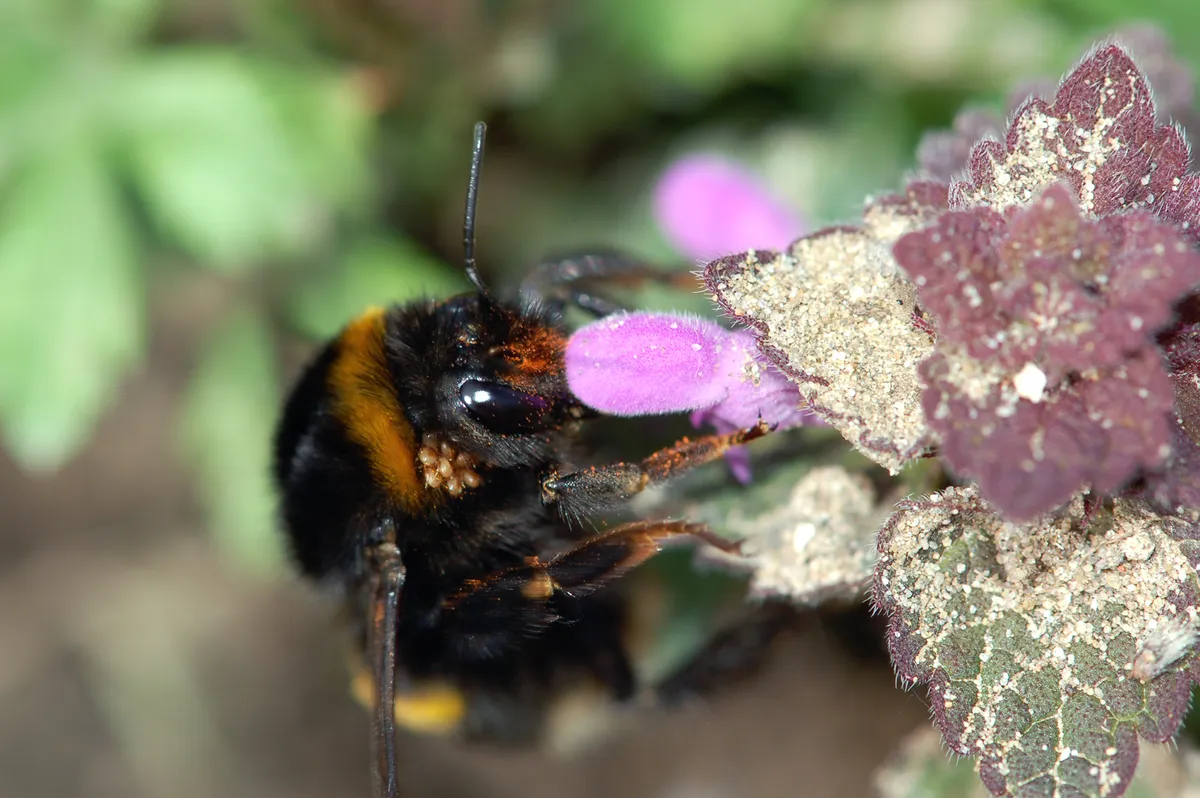Whilst many of us may be familiar with the honeybee and one or two bumblebee species, there are actually over 200 hundred species of bee found in the UK and the wider British Isles (and roughly 20,000 species in total around the world). The majority of which are species belonging to the solitary bees group, and can often be mistaken for other insects such as wasps and hornets, hoverflies, and bee-flies.
Our bee guide looks at why bees are important, how to identify the three groups, which plants to grow to attract bees to your garden (and which to avoid), how to help a struggling bee, and how to make a bee house for solitary bees.
What is the role of bees?
Bees are vital in the life-cycle of a plant, due to pollination. This process is essential because it allows plants to reproduce, and many plants depend on bees or other pollinators to survive.
A bee will collect nectar and pollen from the flower of a plant, as well as some from the stamens - the male reproductive organ of the plants. When the bee visits the next flower, the pollen is transported onto the stigma, or the tip of the pistil - the female reproductive organ of the flower. This is essential to the fertilisation process of plants, food and fruits.
Bees are perhaps the well-known of the insect pollinators, but there are a range of species which can act as pollinators including butterflies, moths, wasps, beetles, and flies.
Bees are featured in our list of the key insect pollinators of spring.
How to identify common British bee species
Honeybee
European honeybees live in a colony, although they don't hibernate they do work industrially and cluster together to stay warm. They work together as a hive to create food (honey) which is created and stored throughout the summer.
Bees have been created honey for over one hundred and fifty million years. To make one pound of honey, bees fly over 55,000 miles, or in other terms, 2.2 times around the world.
There is only one species of honeybee in the UK, known as the European honeybee. Within the species, there are a number of different types of honeybee, referred to as races, such as the Italian bees and Carniolan bees.
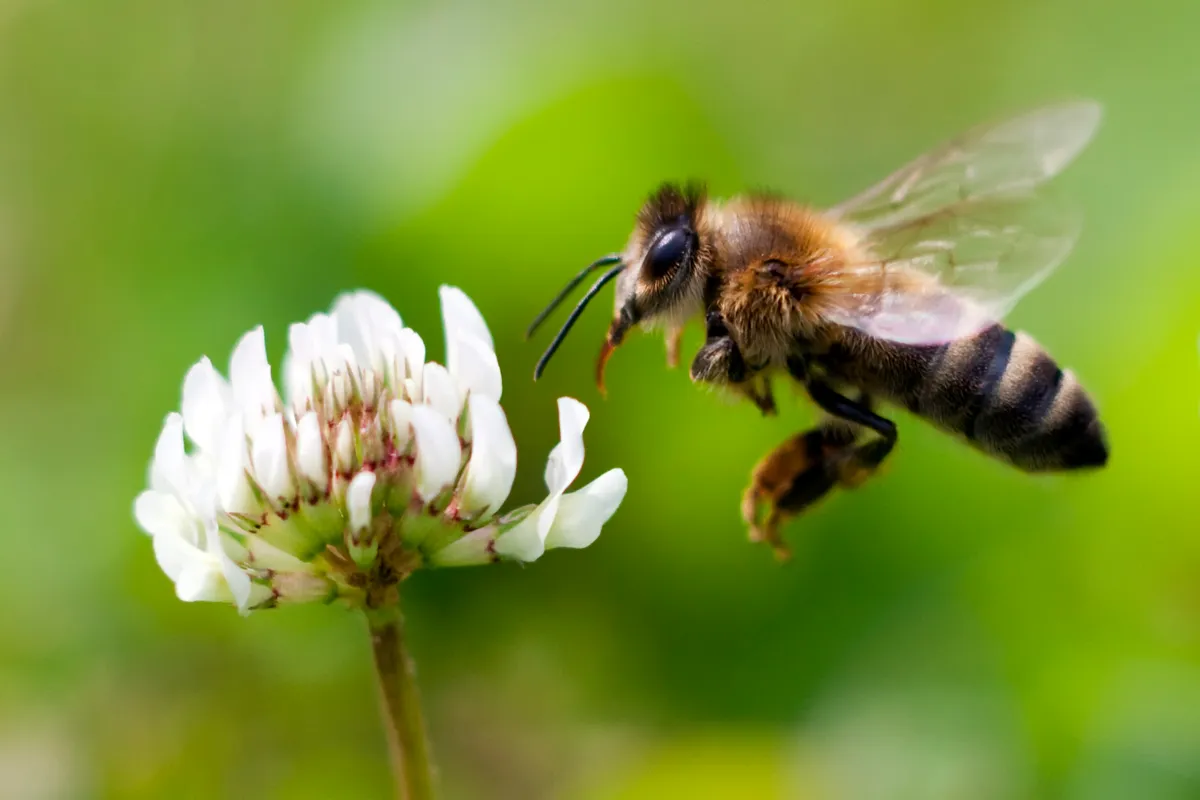
Though some colonies exist in the wild, the majority are domesticated, living in hives all year round. The colony consists of a queen, who can live for three to four years, and many of her daughters. In summer, male drones will also hatch, and have the sole purpose to mate with queens. After mating, the males' sexual organs detach and the male dies. Males which have not successfully mated will be evicted from the hive by the female workers and will die. Hives can number between 20,000 and 60,000 bees. Honeybees have a short tongue length, meaning they are limited to certain pollen sources.
Honeybee colonies divide by swarming, with a queen leaves the hive to found a new colony, and takes a number of worker bees with her. The remaining workers stay in the hive and raise replacement queens, only one of which will survive. If you find a swarm that needs removing, volunteers from the British Beekeeping Association are often able to help out and to collect the swarm.
Bumblebee
25 of the UK's bee species are bumblebees. The majority of these also social bees, though colonies are significantly smaller and vary slightly depending on the species. A well established colony could comprise of up to 400 bees. Tongue lengths vary so different species feed on different flowers.
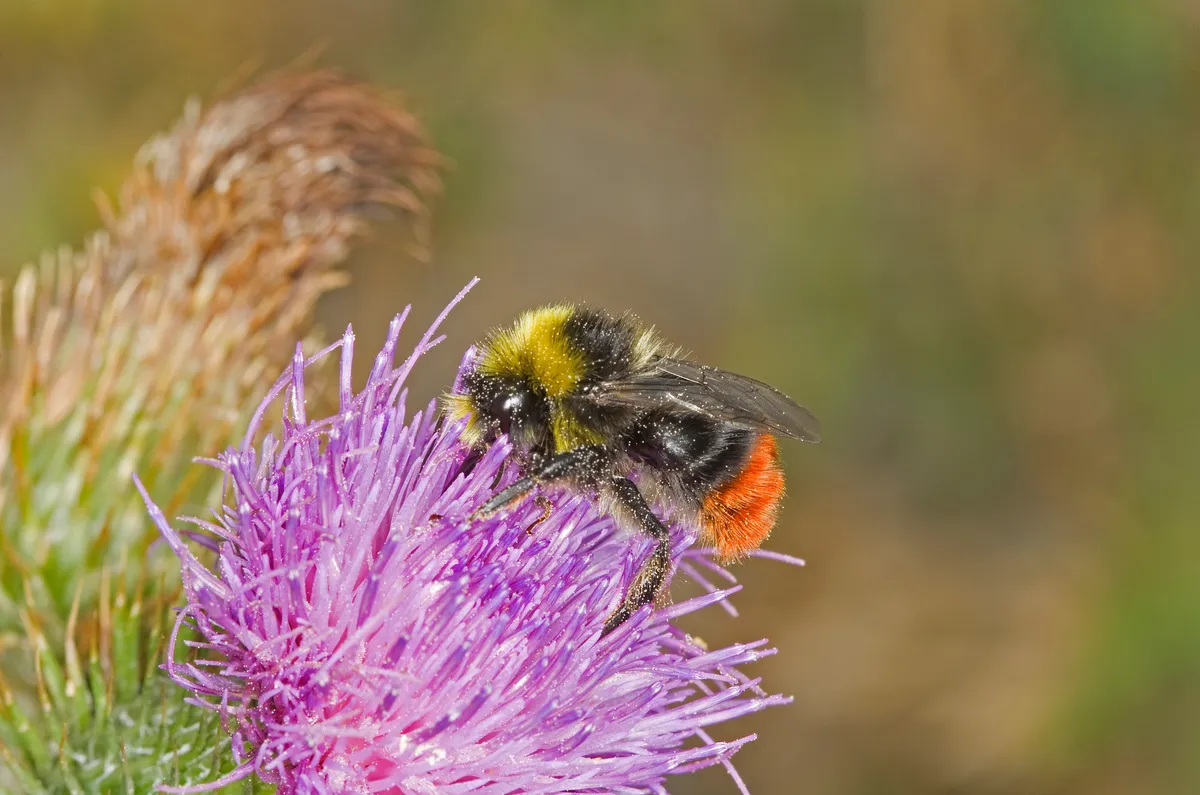
Some bumblebee species are actually parasitic and are known as cuckoo bumblebees. The queen cuckoo bumblebee take over the existing nests of other bumblebee species, killing the resident queen and getting the resident workers to look after her own offspring. Cuckoo bumblebees do not produce workers, only queens and males.
The life cycle of a bumblebee
Bumblebees have an annual life cycle. Usually the queen wakes up from hibernation in spring and finds a good nesting location in which to lay eggs. These eggs hatch into sterile female worker bees, which help their mother increase the size of the nest and raise more workers.
The colony will expand until the queen decides that it is time to produce new queens and male bees which fly off and mate. The newly mated queens will find somewhere to hibernate through the winter, but the old queen, the males and all the worker bees die and the nest is abandoned.
This means bumblebees can be seen throughout spring, summer and into autumn, but they are rarely active in winter.
However over the last 20 years or so, people have started to notice winter activity of a bumblebee commonly found in gardens, the buff-tailed bumblebee (Bombus terrestris). It appears that rather than hibernating, a small number of newly mated queens are establishing nests in the autumn. This means worker bees can be seen foraging in December and January, with new queens and males emerging in February.
Winter generations have mostly been recorded the southern half of England and the majority of bees are seen in urban gardens, parks and car-parks, where there is access to winter flowering ornamental plants. Mahonia seem most attractive to the bumblebees, along with winter-flowing heathers and honeysuckles.
Solitary bees
The majority of the UK's bee species are solitary bees, of which we have around 250 species. Solitary bees exist only in the wild and are the most effective pollinators of all bee species. Their appearance can vary greatly.
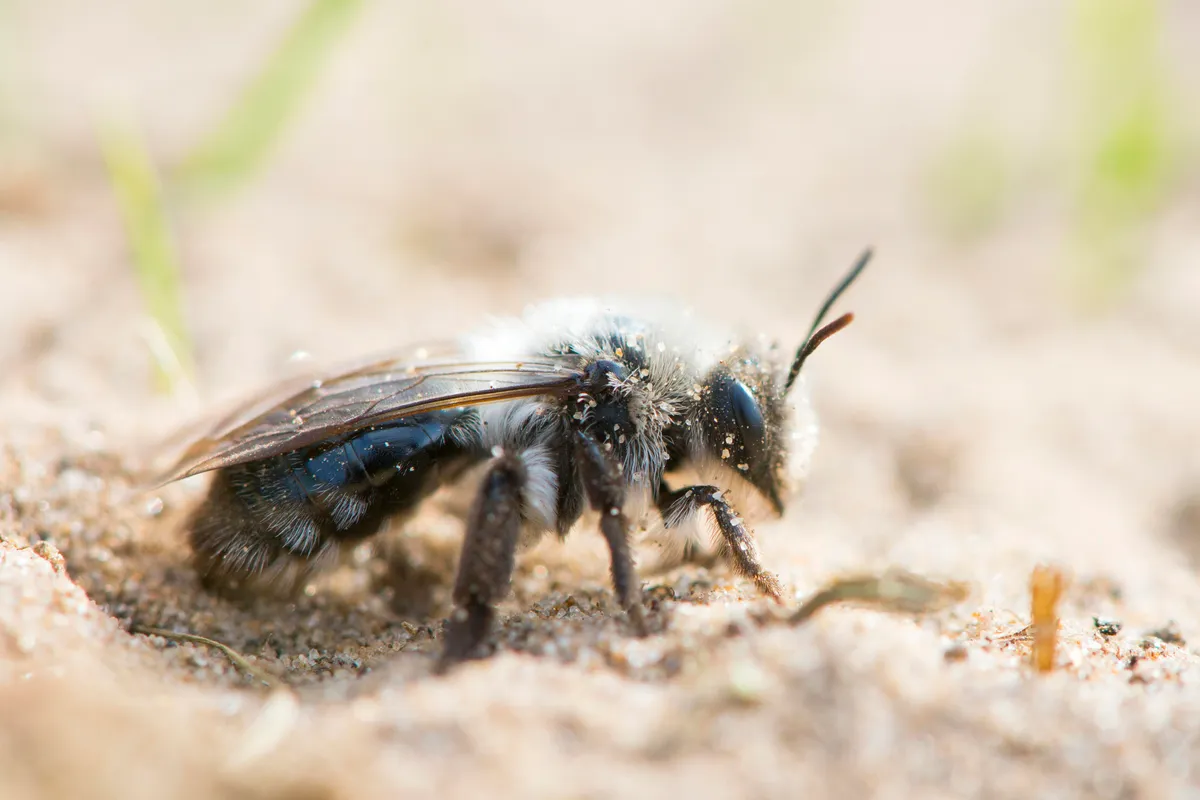
Species that may get mistaken for bees
There are a number of other insects with similar colour markings that may get mistaken for bees, such as wasps and hornets, hoverflies, and bee-flies.
Do all bees sting? Do bees die after they've stung?
Not all species of bee are able to sting, and of the species that can, it is in fact it is only the female bees that are able to sting, as the stinger is a modified ovipositor (egg depositor). Bees usually only sting when they perceive a threat, either to themselves or to their colony.
Female honeybees (the queen and the workers) are able to sting, and die after doing so. The worker honeybee's stinger is barbed and stays in the skin of whatever it is has stung, tearing open the abdomen of the honeybee when it then flies away. However it's that thought that this is actually only the case when the honeybees sting something with quite a thick skin (like humans) and that when they sting smaller creatures (other insects), this does not happen. The queen's honeybee stinger is smooth, and she uses it to kill other rival queens.
Female bumblebees and solitary bees are not aggressive, and will generally only sting if roughly handled or trod on. They are able to sting more than once.
How to save a struggling bee
It's not just us humans who are struggling with the heat this summer. If you come across a struggling bee, it could be suffering from exhaustion, have a parasite or simply been caught out in the rain. Before you intervene, it's best to check that it is in need of help, as you may have just come across a queen bee resting during her dispersal flight. The Bumblebee Conservation Trust provides more information on this.
Eve Betts has rounded up a few things you can do to help perk your new stripy friend up.
Place the bee somewhere warm
If a bee is suffering from an internal parasite, there's nothing you can do. But if you think the bee is simply exhausted, slide a piece of paper beneath it and place it in warm, dry place. Bees can only fly if the temperature of their thorax remains above 30 degrees, so a greenhouse or your house is ideal.
Feed the bee
If there are flowers in the vicinity, you can gently move the bee onto it.
If not, you can create a simple sugar and water solution, with a 50:50 mix of water to white sugar on a spoon or clean milk bottle lid. Don't use brown sugar as this is more difficult for bees to digest. Leave the solution by the bee's head, and it may start feeding.
Never feed a bee honey, though, even if it’s organic – bees can catch pathogens from other bees' honey.
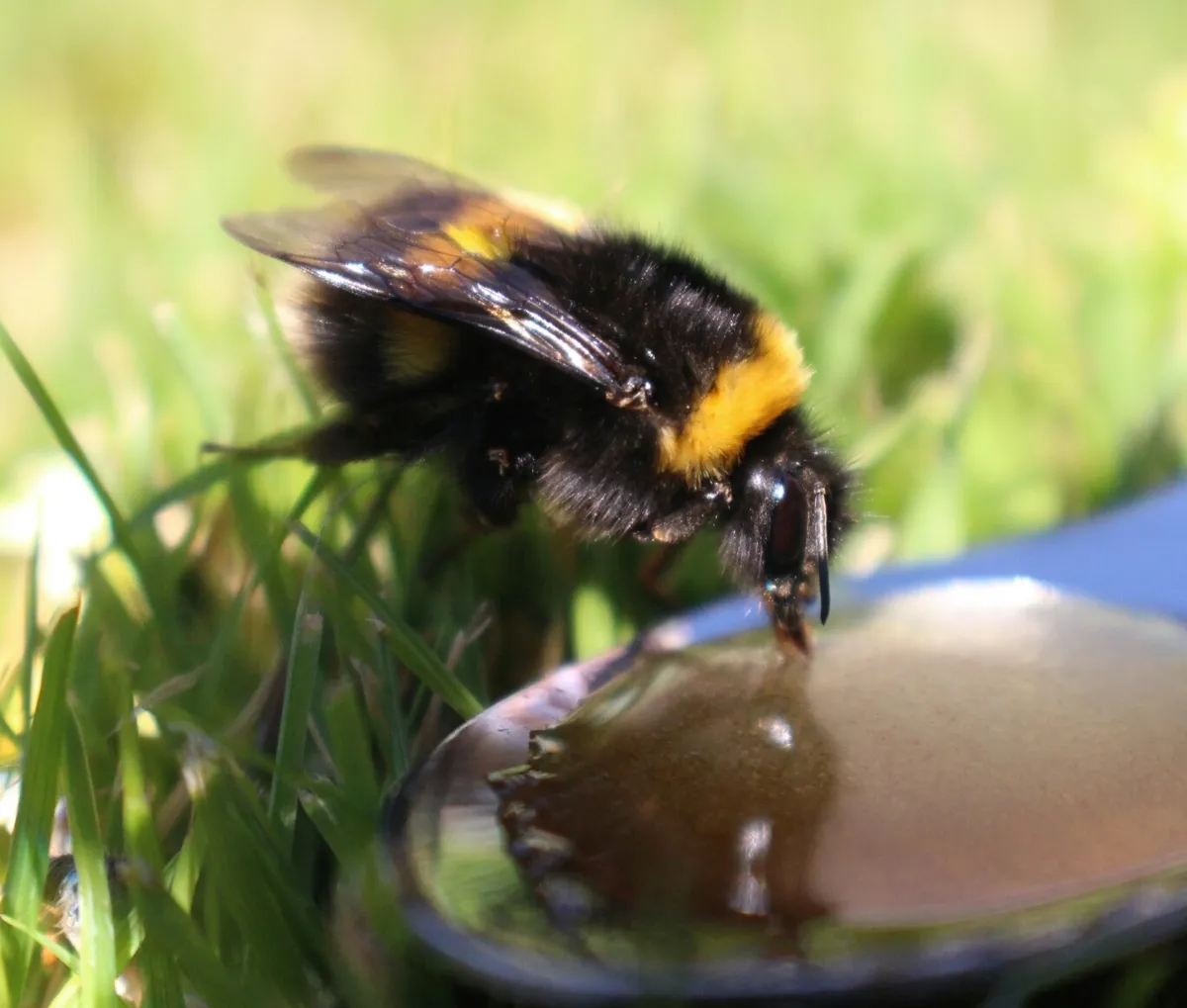
Wait!
Many bees will recover in anything from a few minutes to an hour after feeding on a syrup solution. If it’s not raining, put the bee somewhere safe outside, such as in a plant pot where it can stretch its wings and fly away when it's ready. Hopefully, it will back and buzzing about in no time!
How to attract bees to your garden
Stop using - or limit use of pesticides
Studies have found that pesticides can be harmful to insects and other wildlife, so where possible switch to more wildlife-friendly methods, such as using mulch around plants or simply regular weeding.
Plant for bees

Bees and other pollinators love plants such as dahlias, buddleia, lavender, clematis, foxglove, hosta and wildflowers. See our tips below for more detail on the types of plants bees do and don't love. If you have space, a patch of wildflowers or an overgrown lawn with dandelions and daisies is a big help to bees.
Provide access to water
Bees need water to drink and to use in their hives. While they will often drink the droplets off a lawn or a flower, you can help by giving them access to a water source. Deep water will drown the bee so simply spray water over plants in dry seasons, allowing the odd pool of water to gather to give them a chance of a drink.
Provide shelter
Bees - and many other insects, love a shady, sheltered spot. Allow, a spot in your garden to be a bit wilder with a couple of stacked logs or you could even treat the bees to a bespoke bee house.
Which plants are best for bees?
The more diverse flowers and plants you have in your garden, the more pollinators you will attract, however not all plants are good for bees. Discover ten to plant and ten to avoid below, and discover even more advice for attracting pollinators to your garden in this guide by wildlife gardening expert Dave Goulson.
1
Clematis
Clematis have beautiful, wide flowers and are 100% bee-friendly.
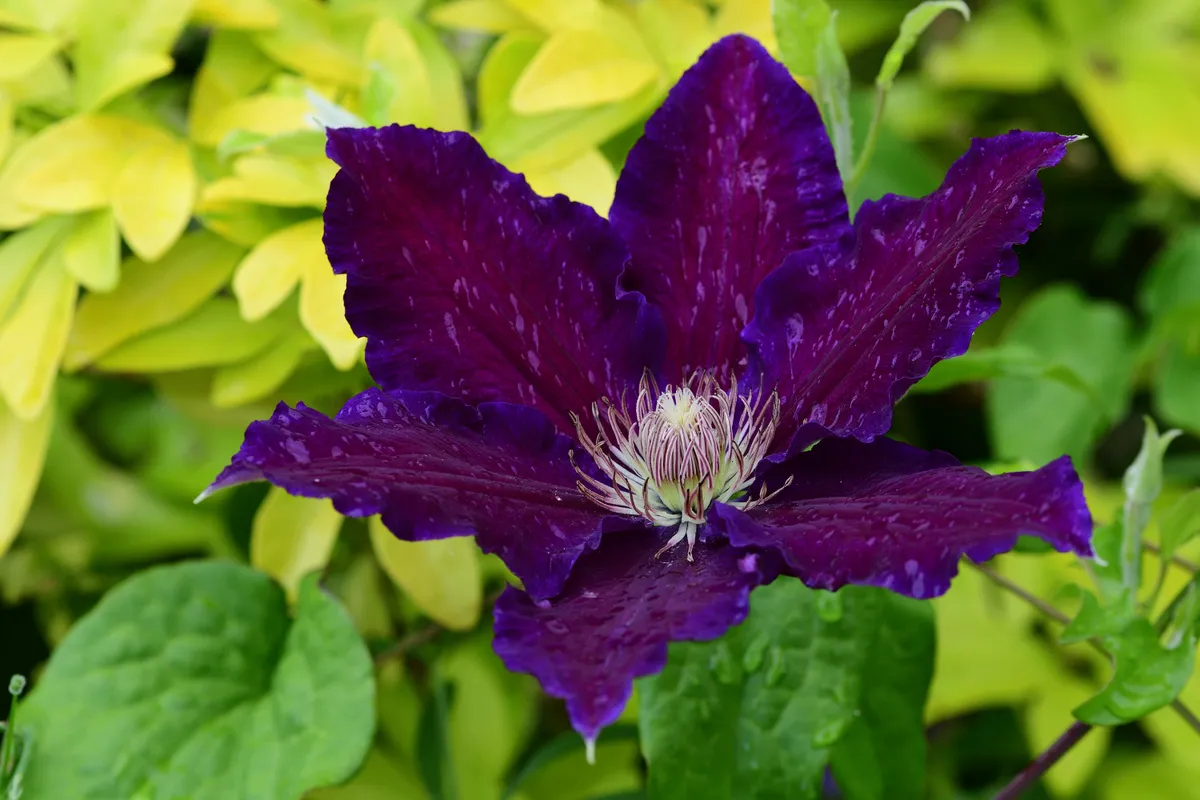
2
Foxgloves
Foxgloves are a bee favourite and despite being poisonous if consumed by humans, they are both honey and bee safe.
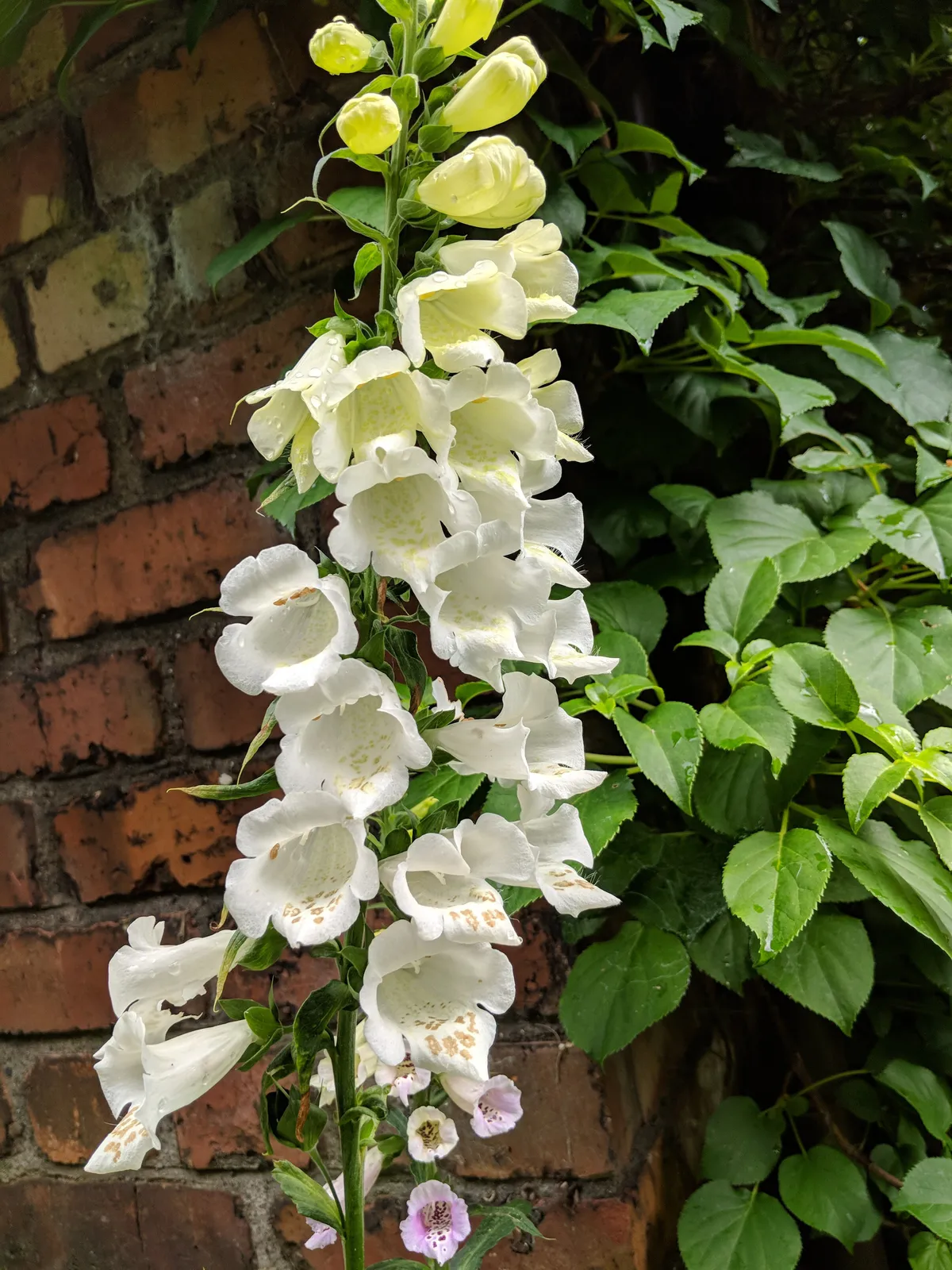
3
Honeysuckle
Try honeysuckle for deliciously scented results.

4
Snapdragons
Snapdragons are equally as bright and arguably more attractive in small or large gardens.
5
Black-eyed Susans
Plant black-eyed Susans in tubs and along fences for a pretty, easy-to-grow substitute.
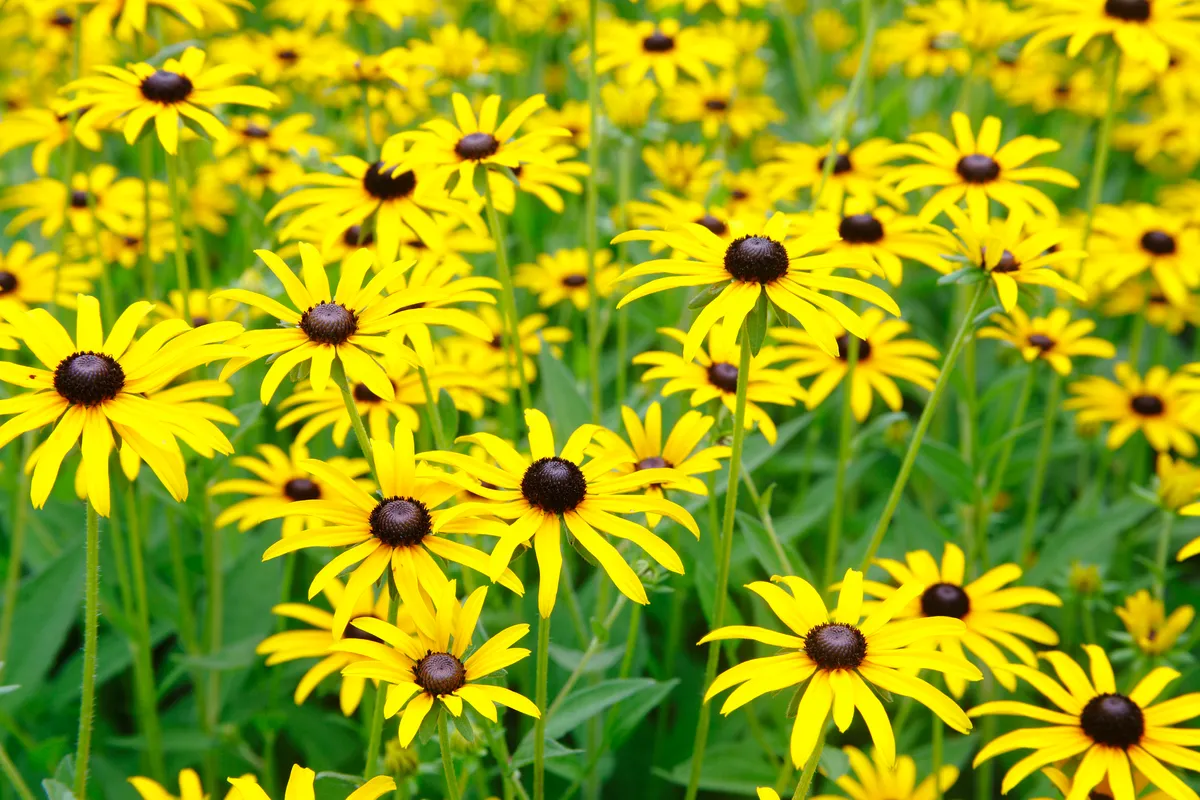
6
Lilacs
Lilacs are both beautiful and wonderfully sweet smelling. Easy to grow and are loved by bees and butterflies.
7
Hollyhocks
Hollyhocks are impressive and just as beautiful as the stargazer but bee-friendly.

8
Hyacinths
Although not quite as exotic as their toxic counterparts, hyacinths are fragrant, gorgeous and easy to grow.
9
Dahlias
Dahlias are a highlight of late summer gardens. Beautiful and simple to grow, dahlias often flower until the first frosts of the year.
10
Rosemary
Why not try planting a classic rosemary bush – aromatic, resilient and favoured by bees.
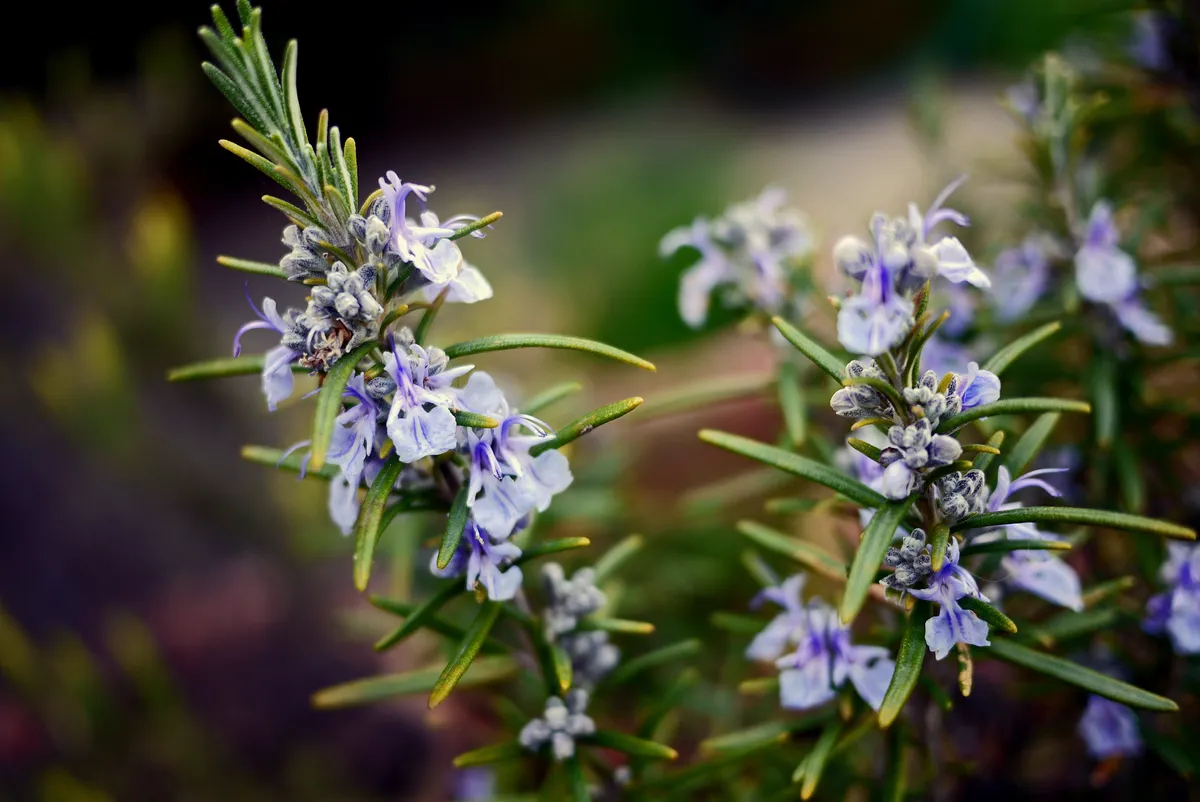
Plants to avoid for bees
Rhododendron
Spectacular and beautiful, not many people know the common rhododendron hides a poisonous secret – its nectar is toxic to bees. It’s common practice for beekeepers to keep their hives closed until the flowering season is over. The resulting honey from rhododendrons has also been known to contaminate honey, making it unsafe for humans to eat.
Azalea
Rhododendron’s sister, azaleas are also toxic to bees.
Bog rosemary
Not to be confused with the herb, bog rosemary is acutely poisonous and the honey made from this plant can cause paralysis to humans.
Amaryllis
Now most commonly recognised as decorative Christmas flowers, amaryllis are gorgeous in bloom but their pollen produces toxic honey.
Heliconia
Exotic and interesting, heliconia, or lobster-claws as its sometimes called, is very toxic to bees.
Stargazer lily
Stunning but deadly, stargazer lilies’ pollen is poisonous to bees.
Mountain Laurel
Part of the blueberry family, the mountain laurel is an evergreen shrub with sweet, white or pink flowers when in bloom. Pretty they may be, but the honey produced by mountain laurel is toxic to humans and is often bitter tasting.
Yellow Jessamine
Pleasantly aromatic and attractive as they are, bees are often poisoned by the vines and flowers of the yellow jessamine and its toxins are said to be as severe as hemlock.
Oleander
Harmful to butterflies as well as bees, oleander has a severe effect on hives. Nectar taken to the hive concentrates as it dries out, which increases the amount of toxins and usually results in a mass hive wipeout.
Trumpet flower, or angel’s trumpet
Though ornamental and sweet smelling, the trumpet flower’s nectar can cause brood death in bees and is best avoided.
How to build a bee house

Bee houses are fun and easy to make. Your bee house will be ideal for aerial-nesting solitary bees (rather than mining bees or snail-shell nesting bees). These solitary insects do not belong to hives like honey bees, but make their own individual nests for their larvae. A variety of species can use bee houses, including red mason bee, patchwork leafcutter bee, and Willughby’s Leafcutter.
If you're thinking of buying a bee hotel, or want to remove the cocoons over winter, wildlife gardener and award-winning author Kate Bradbury provides advice in this guide to bee hotels.
What are the small red things on a bumblebee?
If you're able to get a close-up view of a bumblebee, you may spot very small red invertebrates on it. These are mites, which are a type of arachnid (and thus related to spiders, harvestmen, and scorpions). Although they may look a parasitic, the majority of mites on bumblebees are actually quite harmless. They feed on wax, debris in the nest, and other small insects, and use the bees as transport between nests and flowers.
If an individual bee is so overwhelmed with mites that it cannot fly, you can gently brush the mites off with a very soft and small paintbrush (such as a child's paintbrush).
